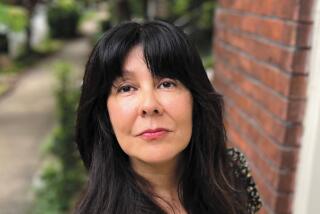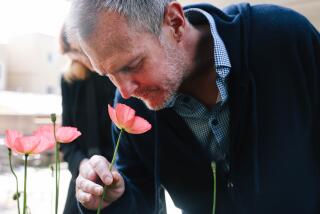Father Gregory Boyle of Homeboy Industries puts compassionate pen to paper
For the last 20 years, Father Gregory Boyle has been writing -- and not writing -- the book that is his newly released memoir, “Tattoos on the Heart: The Power of Boundless Compassion” (Free Press: 220 pp., $25). The difficulty was never a lack of material. For as long as I’ve known him, Boyle has been amassing a stupendously rich cache of stories about the homeboys and homegirls who one way or another found their way to his doorstep.
Boyle was already not writing his book when I met him in the fall of 1990. I’d heard that a Jesuit priest operated some sort of gang ministry out of a small Catholic church located east of the Los Angeles River between the public housing projects of Pico Gardens and Aliso Village.
In the mid-1980s to mid-1990s, when Boyle’s gang work was hitting full-throttle, Pico-Aliso was the home to eight active street gangs and, according to LAPD statistics, had the highest level of gang activity in all of Los Angeles. Since the city was, at the time (and arguably still is), the gang capital of the world, this meant that the mile-square parish where Greg Boyle was pastor had within its borders the most intense level of gang activity on the planet.
Finding work that is a true calling is as mysterious a process as falling in love. There were elements in Boyle’s Irish Catholic background that suggested the priesthood. He’d had, after all, a beloved Jesuit priest uncle. And he went to Jesuit-run Loyola High School during a time when, for idealistic adolescents like Boyle, activist priests such as Daniel Berrigan were beacons of authenticity.
Yet there was nothing particular to suggest that the smart, Hancock Park-raised boy with the triple master’s degrees (masters of divinity, of sacred theology and of English) would find himself radicalized by a year among the poor of Bolivia and come home to run the nation’s best-known gang intervention program, surrogate-fathering the kids whom most of the rest of the culture wanted to lock up and forget.
I was curious about what kind of person would embrace such a maelstrom and got myself assigned a profile of Boyle for the Los Angeles Times Magazine, and spent the next six months bungee-corded to his ankle, trying to figure out this priest guy who thought he could make a difference with gangsters.
About halfway through my reporting in 1991, I noticed that what I was witnessing had sprawled beyond what a 10,000-word story could contain. I wanted to write a book. But I needed Boyle’s consent, which was problematic since he’d mentioned that he was working on his own manuscript.
I screwed up my courage and blurted my request. He stared curiously at my distress. “Oh,” he said, “I was really hoping you would ask.” I did not realize until much later that in proposing my book, I had unwittingly given Boyle the excuse he needed to keep not writing his.
Yet, he continued to gather his funny, quirky, redemptive, heartbreaking stories. He told them in homily form in the dozens of jails, camps and juvenile halls where he celebrated mass on Saturday, embedded them in the speeches he gave to raise money for the jobs program that was the precursor for Homeboy Industries (which provides work experience, therapy and the opportunity for once-rival gang members to work side-by-side), unfurled them at panels, hearings and conferences where he tried to convince lawmakers and anyone else who’d listen that the young men and women whom his tales featured were worth much more than the worst things they had ever done and that they should never, ever be thrown away.
For each occasion, Boyle spun a narrative tapestry that included one or two funny anecdotes laced with street vernacular and Spanglish, and at least one tale of redemption. Then, after entrancing his audience with an account of a kid’s courage and shattering vulnerability, Boyle would deliver the gut-punch. “I told that story,” he would say, “three weeks later at his funeral.”
At last count, he’s buried 168 young men and women whom he’s surrogate-fathered. Burying kids you know causes a psychic rending. Over the years, I have watched the deaths take pieces out of Boyle. But here’s the thing: his is a heart that regenerates, miraculously so. I believe that some of what makes the regeneration possible is the repeated act of threading the voices of those once so piercingly alive into his quickening weave of stories.
Why then was it hard for him to bring to the page the tales that so ignited his public speaking? Every year or two, he’d take a swipe at a book chapter. He had composed op-eds for The Times and other publications, so the task of putting thought to paper was hardly unfamiliar. Yet when rendered in print, his fantastically affecting anecdotes didn’t take emotional flight.
Then one day they did. It happened in the spring of 2008 when Boyle was on a four-month sabbatical in Italy.
Recently, I asked him what he thought made the difference. He thought for a minute. “I don’t know exactly,” he said. In part, he stumbled across the right structure. But mostly it seems that after all the years giving voice to those who had no public voice, he found the right path to his own.
It took him four weeks in Rome to blow out most of the chapters, which he e-mailed to me and a couple of other friends for comment.
My friend Greg Boyle lives -- as Daniel Berrigan once said -- “as though the truth were true.” He is more gifted at compassion than anyone else I have ever met. And though compassion is volitional, it is assuredly also a talent, akin to, say, a gift for playing the piano. Anyone who puts his or her mind to it can learn to play, but when you hear someone who is meant to play, it is an entirely different matter.
Boyle says that “Tattoos on the Heart” is a guidebook to compassion, an invitation to “obliterate the notion that there is a them who should exist out of the circle of our kinship.” I’d call it a literary spell that aims to will that larger kinship into being.
Fremon is the editor of WitnessLA.com. Her book “G-Dog and the Homeboys: Father Greg Boyle and the Gangs of East Los Angeles” was published in 1995.
More to Read
Sign up for our Book Club newsletter
Get the latest news, events and more from the Los Angeles Times Book Club, and help us get L.A. reading and talking.
You may occasionally receive promotional content from the Los Angeles Times.






